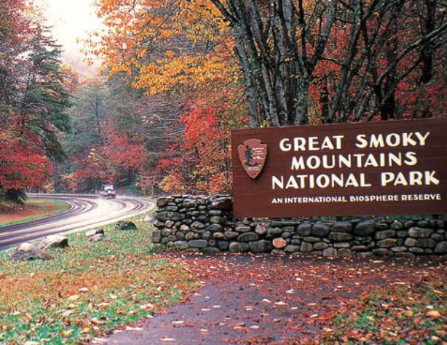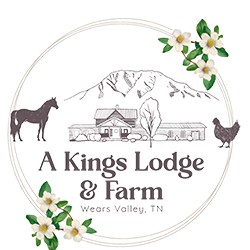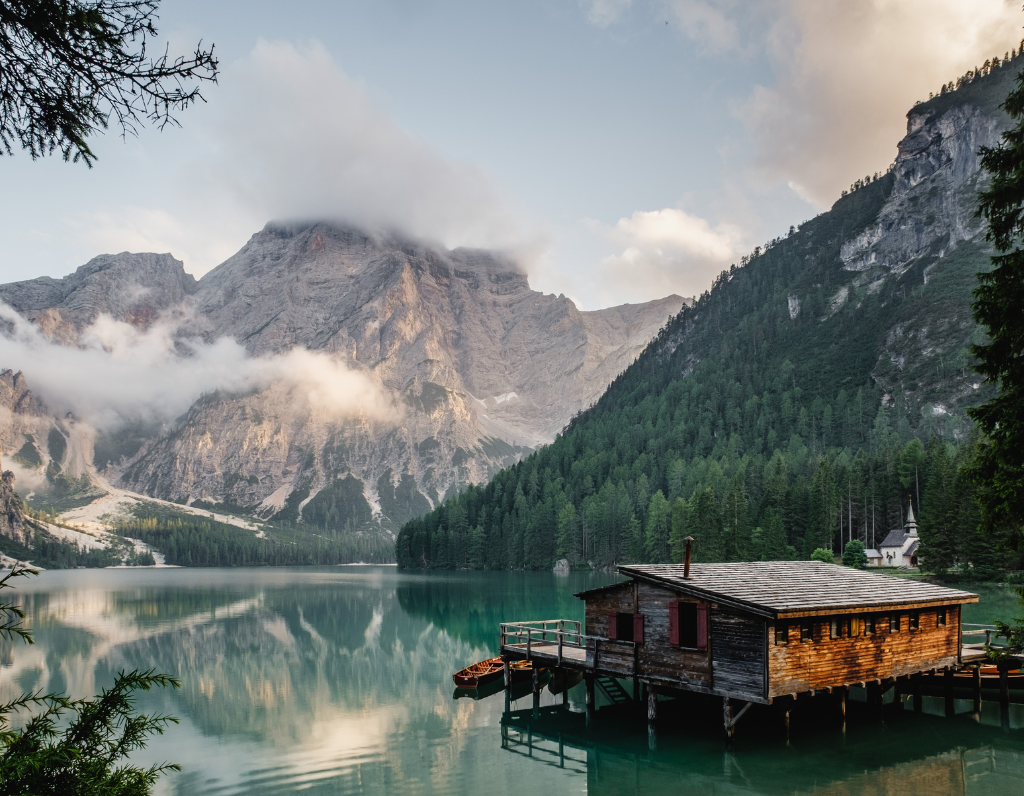Avoid the Crowds! The Insider’s Guide to Visiting Smoky Mountain National Park


Come and unearth the Great Smoky Mountain National Park:
Full of expansive views, gorgeous trees and flowers, great hiking, plentiful history, and abundant wildlife, Great Smoky Mountain National Park is a must-add to your East Coast bucket list. But when is the best season to visit? While every month of the year has its pros and cons, we have two favorite times to visit the park: spring and fall.
Here’s our guide to the pros and cons of visiting Great Smoky Mountains National Park in every season.
Spring (March through May):
Pros:
Spring in the park is one of the best times of year to visit. The landscape is beautiful, with flowers blooming, waterfalls gushing, and the hillsides starting to turn green. The weather is cooler and less humid than the summer months, making it a great time to hit low-elevation trails. Spring is also a fantastic time to spot wildlife, especially newborn babies like bear cubs and elk calves. The Cataloochee and Cades Cove areas of the park are ideal if you’re hoping to spot some serious cuteness. Crowds are usually minimal, especially in early spring, making it a good time to check out some of the more popular parts of the park.
Cons:
While spring can be beautiful in the park, the weather can also be unpredictable. You might experience balmy and cloudless 70-degree days, but you might also encounter rain or even snow flurries at higher elevations. These months in the park see some of the highest amounts of precipitation, meaning trails are often muddy. Come prepared with hiking boots with good tread and a rain jacket.
Summer (June through August):
Pros:
Like most national parks, summer is the most popular time of year to visit the Great Smoky Mountains. There are perks to visiting in the warmer months. Wildflowers like rhododendrons are in bloom, and in late May and early June, the Elkmont area sees an incredible natural display when the synchronous fireflies appear after dark. Nights are mild, making it a great time of year to tent-camp or backpack.
Cons:
Afternoon highs at lower elevations can often be above 90 degrees in the summer, and humidity can make it feel much more uncomfortable. Haze is common, reducing the sweeping vistas the park is known for. Bugs come out when the weather warms up, including mosquitoes and ticks. Bring bug spray and wear long pants and sleeves to avoid a run-in with a blood sucker. Rain and afternoon thunderstorms are common, so keep an eye on the weather and plan to get your hiking done early in the day. If you do visit during the summer, stick to higher elevations where highs range in the 60s and 70s.
While not our favorite season to visit the park, there is a reason people flock here in summer. If you can avoid the crowds and heat of the summer months, we’d suggest it.
Fall (September through mid-November):
Pros:
There’s nothing quite like fall in the Smoky Mountains. The hillsides are alight in reds, yellows, and oranges, and it feels like you’ve stumbled into a fairytale at every turn. Temperatures are much milder than the summer months, with highs cooling from the 80s to the 50s as the season progresses. It’s also the park’s driest time of year, with little precipitation and humidity decreasing.
In Cataloochee, you might hear the sounds of elk bugling or see bulls tussling during the annual elk mating ritual known as “the rut.” Harvest festivals abound in the nearby towns, and orchards around the park are awash in apples and pumpkins.
Cons:
The main drawback of visiting in autumn is the crowds. October, when the foliage is at its peak, is usually the second highest visitation month of the year. If peak color isn’t as important to you, visit in September or November to get the same benefits with fewer crowds.
Winter (mid-November through February):
Pros:
While the park can be magical in the winter, unless you’re a cold-weather warrior, this isn’t the best time to explore the Smokies. However, if you’re willing to brave the cold, volatile weather, and road closures, you’ll find uncrowded trails and a magical wonderland when the snow falls. Click into your cross-country skis and take in the breathtaking views from the top of Clingmans Dome. Or, for a more moderate winter adventure, hike to Laurel Falls.
Cons:
Because elevations range greatly in the park, from just 840 feet above sea level to Clingmans Dome, towering at 6,643 feet, weather can vary wildly, especially in the winter. While lower park elevations often see winter daytime temperatures in the 50s, it can get much colder and snowier at higher elevations. Nightly temperatures often get below freezing, even at lower elevations, which means any moisture on the roads will freeze, leading to often-hazardous driving conditions in the park. Many popular park roads also close in the winter, including the road to Clingmans Dome and the Roaring Fork Motor Nature Trail.
Fall in Love with Smoky Mountain National Park and A King’s Lodge
To sum it up, the best times to visit Great Smoky Mountain National Park are in the spring and fall. Each season offers unique benefits, but these two provide the best combination of comfortable weather, beautiful scenery, and manageable crowds. Spring brings new life and vibrant blooms, while fall offers stunning foliage and mild temperatures. Of course, personal preferences and tolerance for weather conditions play a big role in planning your trip. No matter when you go, the Smokies are sure to leave you with unforgettable memories and breathtaking experiences.
And after a day of exploring, unwind at A King’s Lodge. Our Main Lodge sits on seven beautiful acres at the base of Cove Mountain. The lodge has five private bedrooms, five bathrooms, and a large game room/bunk room, offering plenty of room for everyone to feel right at home! Our property continues across the street, where our horses and farm animals live. One of our guests’ favorite pastimes is walking around, taking in the breathtaking scenery from many angles. A King’s Lodge is the perfect place to create memories that will last a lifetime!
Come experience ranch life with us. Start with feeding the goats, sheep, potbelly pigs, and chickens! Your kids will love our petting farm. Then, enjoy a short, interactive lesson on how to groom a horse, followed by lead rope rides around the arena. The Farm Experience starts at only $175. View our catalog to see all that the Farm Experience has to offer!
FAQ’s:
1: What are the best times to visit Great Smoky Mountain National Park?
A: The best times to visit are in the spring (March through May) and fall (September through mid-November). These seasons offer comfortable weather, beautiful scenery, and manageable crowds.
2: What are the pros of visiting the park in the spring?
A: Spring offers beautiful blooming flowers, gushing waterfalls, cooler and less humid weather, and excellent opportunities to spot wildlife, especially newborns like bear cubs and elk calves.
3: What should I be prepared for when visiting the park in the summer?
A: Summer brings high temperatures and humidity, frequent afternoon thunderstorms, and crowds. It’s best to hike early in the day and stick to higher elevations where it’s cooler.
4: What are the highlights of visiting the park in the fall?
A: Fall features stunning foliage in reds, yellows, and oranges, milder temperatures, and the sounds of elk bugling. It’s also the park’s driest time of year with plenty of harvest festivals in nearby towns.
5: What can I expect if I visit the park in the winter?
A: Winter offers uncrowded trails and a magical snowy landscape, but it comes with cold temperatures, possible snow and ice, and road closures. It’s great for cross-country skiing and moderate winter hikes if you’re prepared for the cold.
6: What amenities does A King’s Lodge offer?
A: A King’s Lodge features five private bedrooms, five bathrooms, a large game room/bunk room, and ample space for everyone to feel at home. The property spans seven acres at the base of Cove Mountain, with additional space across the street housing farm animals.
7: What activities are available at A King’s Lodge?
A: Guests can enjoy feeding goats, sheep, potbelly pigs, and chickens at the petting farm. There is also an interactive lesson on grooming a horse, followed by lead rope rides around the arena. The Farm Experience is available starting at $175 and offers fantastic photo opportunities with the Great Smoky Mountains as the backdrop.





